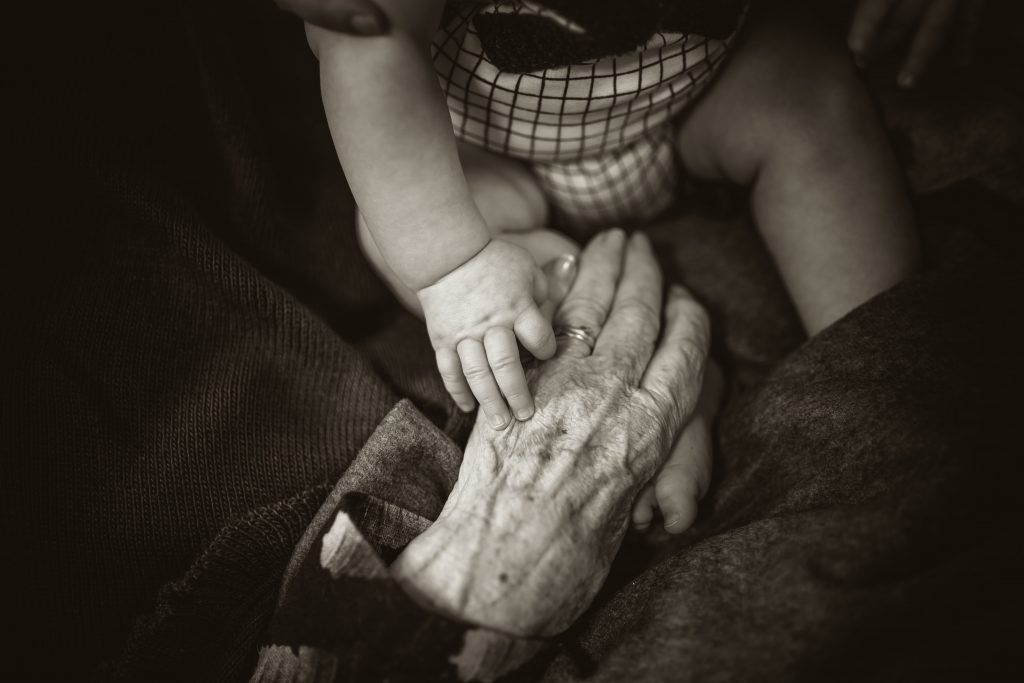Intergenerational Trauma and Historical Trauma: How Trauma Can Be Passed To Future Generations and Ways to Break the Cycle

By Thrive Wellness Reno Clinical Director and Therapist Kerstin Trachok, CPC
Trauma can have far-reaching consequences on an individual and those closest to them. The concepts of intergenerational trauma and historical trauma are well-accepted theories proposing that the impacts of trauma can even extend across generations. The concepts of intergenerational and historical trauma first emerged in 1966 when researchers found high rates of psychological distress among children of Holocaust survivors. Relatively new theories, scientific study into these trauma phenomena is lacking, but evidence does show biological, social, mental, and emotional trauma reverberations throughout lineages.
INTERGENERATIONAL TRAUMA
Intergenerational trauma describes the passing of individuals’ traumatic experiences through family generations. For instance, if a person experienced a traumatic event, such as sexual assault or domestic violence, the implications of that trauma can carry over to their children, especially if they were pregnant at the time the trauma occurred. Biologically, their children’s brain structure may be impacted. Socially, the children’s relationships with their family members, community, and society may be affected. Mentally, these children may be more at risk for certain mental health challenges, including anxiety , depression , and post-traumatic stress disorder (PTSD) .
HISTORICAL TRAUMA
Closely related to intergenerational trauma, historical trauma may develop when a community or generation collectively experiences trauma, such as pandemic, war, economic depression, or oppression.
One example of historical trauma can be found within the Native American population. Native Americans have historically suffered a great deal of trauma, from the destruction of much of their population to forced displacement throughout the ages. Such trauma has impacted their social, mental, and behavioral health, as evidenced by increased rates of poverty, psychological distress, and substance abuse within the demographic.
IMPLICATIONS OF INTERGENERATIONAL TRAUMA AND HISTORICAL TRAUMA
Many don’t realize they are affected by intergenerational or historical trauma. Instead, these individuals are commonly so adjusted to the impact of the condition on their lives that they consider the implications of past trauma normal functioning.
Some implications of intergenerational trauma and historical trauma include:
- Mental and behavioral health manifestations: Intergenerational trauma and historical trauma may manifest as depression , anxiety , panic attacks , PTSD , substance abuse disorders , and struggles with self-esteem .
- Genetic changes: Trauma impacts the brain’s immune system cells which are called the microglia. Instead of clearing damage and promoting growth within the brain as they’re meant to, the microglia destroy nerve endings. This can cause depression, anxiety, and dementia which can be passed genetically .
- Immune system responses: Trauma may lead to an overactive or underactive immune system, conditions that can become hereditary.
- Behavioral patterns: Trauma can determine one’s behaviors, which can become ingrained, especially through parenting styles. These patterns of behavior can be passed to one’s children, impacting their personalities, worldview, and relationships.
BREAKING THE CYCLE OF INTERGENERATIONAL TRAUMA AND HISTORICAL TRAUMA
The cycle of intergenerational trauma and historical trauma can be broken. The most crucial step in adapting to this trauma is becoming aware of its impact on oneself and one’s family. Because families are traditionally adept at adjusting to challenges, attending individual or family therapy can provide insight into whether a family and its members are affected by intergenerational trauma or historical trauma.
A mental health clinician may dive into individuals’:
- Full family history: As a way to understand how the histories of one’s parents, grandparents, and so on have impacted their life.
- Experiences with traumatic events: Such as experiences involving illness, injury, loss, or violence.
- Socioeconomic status: A history of poverty and/or oppression places individuals at higher risks for intergenerational trauma and/or historical trauma.
- Triggers: Understanding the triggers that exacerbate any symptoms of anxiety and depression may provide deeper context that points to an experience that extends beyond one’s lifetime and spans back into the past.
While discovering the implications of intergenerational trauma and historical trauma, individuals can also work with their clinician to develop healthy coping skills that can also be passed along to their children. By seeking mental health treatment for personal or family trauma, individuals can process their experiences and emotions, manage their symptoms and triggers, and normalize open, honest conversations with their loved ones.
On the societal level, the cycle of historical trauma can be broken through advocacy efforts on behalf of marginalized groups, including encouraging community support resources.
CLINICAL SUPPORT FOR INTERGENERATIONAL TRAUMA AND HISTORICAL TRAUMA
At Thrive, our compassionate mental health clinicians are skilled at treating trauma in various forms including intergenerational trauma and historical trauma. With the intention of nourishing your mental health so you and your family can thrive, we offer both individual and family therapy and provide many mental, physical, and behavioral health services. Reach out to learn more.
About the Author
Thrive Wellness Reno Clinical Director and Therapist Kerstin Trachok, CPC
Kerstin received her master’s degrees in clinical mental health counseling and school counseling from the University of Nevada, Reno. Kerstin has six years of experience in the counseling field working in different settings and a wide array of mental health issues. Kerstin has experience working in schools with children of all ages, clients with psychosis in a hospital setting, adults and teens in private practice, and working at an agency providing counseling to children and families. Kerstin is a fully licensed clinical professional counselor in the state of Nevada and received her certification in Complex Trauma Levels I and II. Kerstin has experience working with children, teens, adults and families with trauma, anxiety, grief, depression, ADHD, autism spectrum, suicidal ideation, and behavioral issues. Kerstin is passionate about fostering client’s growth and autonomy while providing a safe and secure space to process emotions. Kerstin uses creative interventions and other tools to allow clients to voice their internal experiences beyond traditional talk therapy. Kerstin’s theoretical approach is Acceptance and Commitment Therapy. She uses mindfulness tools and techniques to help clients be present moment oriented, and reduce stress so they may move towards psychological flexibility. Kerstin believes all individuals have the right to live a fulfilling and vital life.








